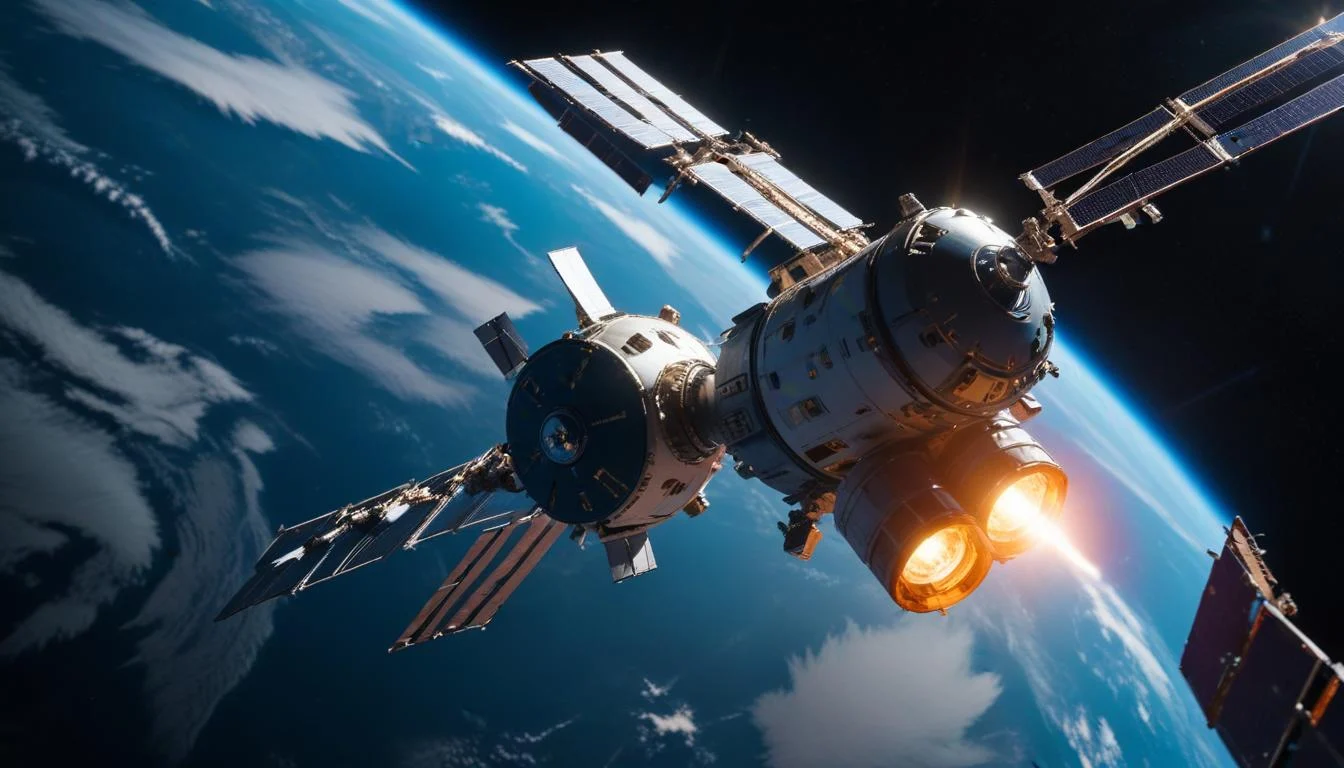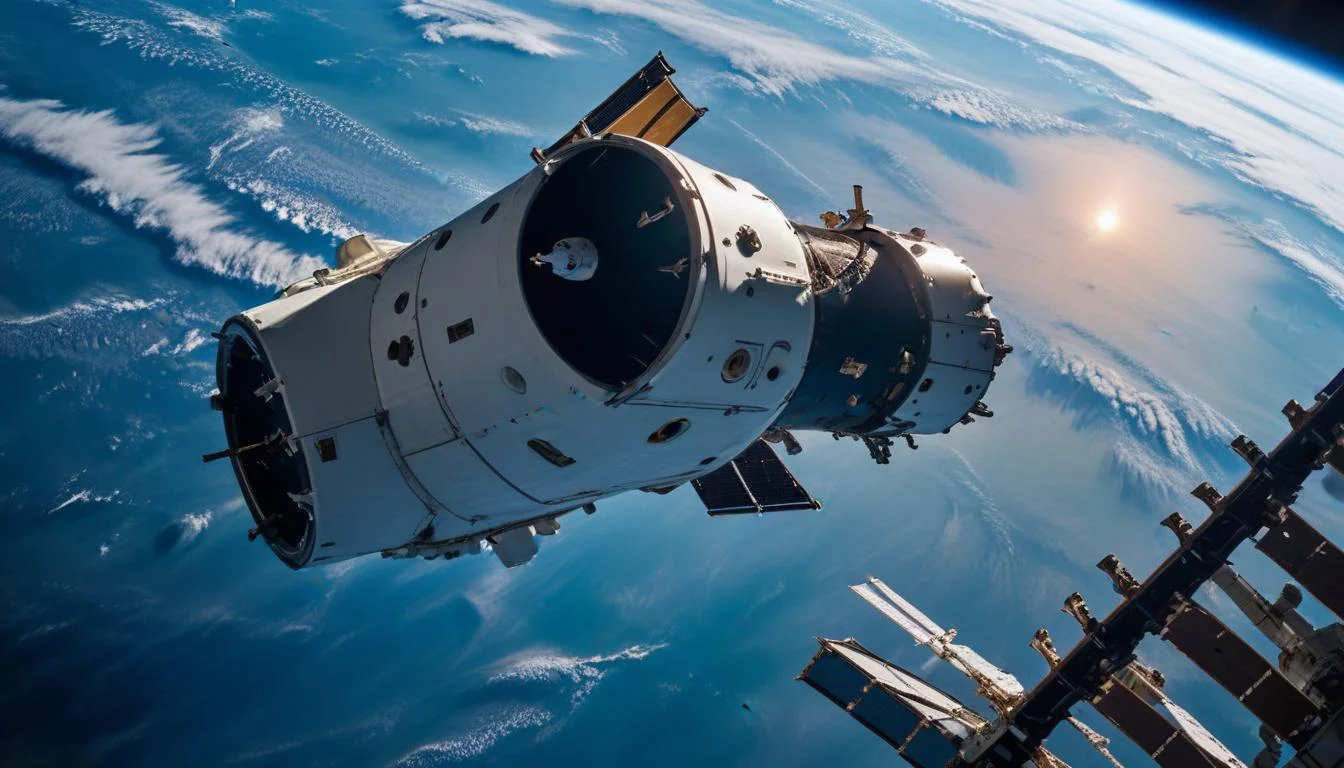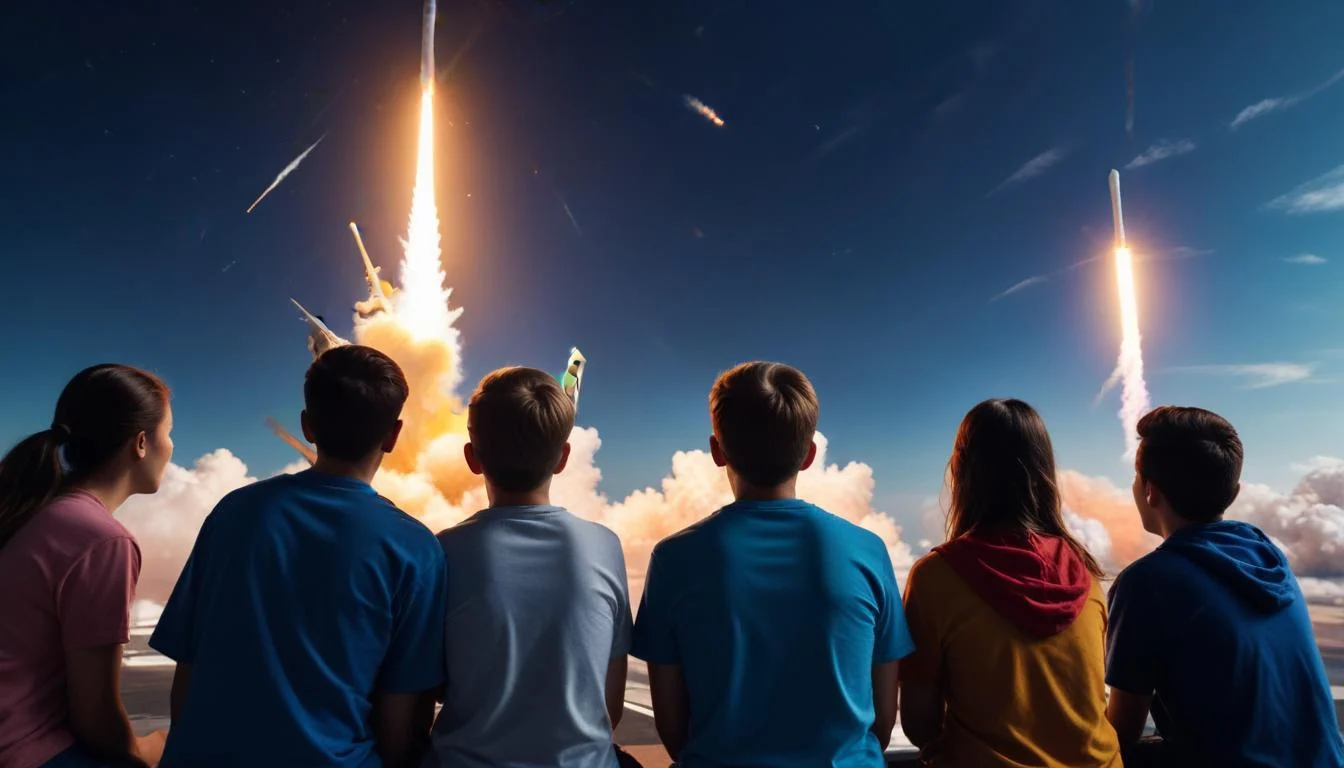 🔔 Affiliate Disclosure
This content may contain affiliate links. If you click on a link and make a purchase, we may receive a small commission — at no extra cost to you. Thank you for supporting BeatInsights! 💛
🔔 Affiliate Disclosure
This content may contain affiliate links. If you click on a link and make a purchase, we may receive a small commission — at no extra cost to you. Thank you for supporting BeatInsights! 💛
The SpaceX Dragon has revolutionized space travel, offering both cargo and crew transportation to the International Space Station (ISS) and beyond. SpaceX’s mission to reduce space transportation costs and enable the colonization of Mars has significantly impacted the space industry. This article provides a comprehensive overview of the Dragon spacecraft, exploring its design evolution, technical specifications, and critical missions, demonstrating SpaceX Dragon spacecraft capabilities, Crew Dragon missions to ISS, Reusable spacecraft technology benefits, Dragon spacecraft safety features emergency procedures. We delve into its cargo resupply capabilities, its groundbreaking role in human spaceflight, and its future potential, cementing its place as a vital asset in space exploration. We will uncover the benefits of Reusable spacecraft technology benefits and demonstrate SpaceX Dragon spacecraft capabilities in this analysis.
The Evolution of the SpaceX Dragon
Dragon 1: Cargo Resupply Missions
The initial Dragon, known as Dragon 1, was designed primarily for cargo resupply missions to the ISS under NASA’s Commercial Resupply Services (CRS) program. Its early development focused on creating a reliable and cost-effective method for delivering essential goods and scientific experiments to the orbiting laboratory. Key features of Dragon 1 included a pressurized capsule for transporting sensitive cargo and an unpressurized trunk for carrying larger items.
These CRS missions proved instrumental in sustaining ISS research activities, providing astronauts with necessary equipment, food, and supplies. However, these missions faced challenges, including the need for improvements in reliability and efficiency, leading to gradual design enhancements over time. NASA’s ISS page offers a comprehensive look at the station’s needs.

Dragon 2 (Crew Dragon): Human Spaceflight
Dragon 2, also known as Crew Dragon, represents a significant leap forward, designed to transport astronauts to and from the ISS. Significant design differences and upgrades distinguish it from Dragon 1, prioritizing crew safety and comfort. One of the most important additions is the enhanced safety features, including a Launch Abort System (LAS) capable of rapidly propelling the capsule away from the rocket in the event of an emergency.
The life support systems are designed to maintain a habitable environment for the crew during spaceflight. Furthermore, the interior design focuses on providing astronauts with a comfortable and functional workspace. The Dragon 2 is designed to be reusable. This reusable nature of the capsule contributes to lowering the overall cost of space travel, aligning with SpaceX’s long-term goals. SpaceX Dragon spacecraft capabilities are enhanced by the reusable designs, a key factor in reducing the cost of missions.
Technical Specifications of the SpaceX Dragon Spacecraft Capabilities
Dimensions and Mass
The Crew Dragon capsule measures approximately 8.1 meters tall and 4 meters in diameter, providing a habitable volume of roughly 9.3 cubic meters. The overall spacecraft mass varies depending on the mission but generally falls between 12,000 and 13,000 kilograms when fully loaded. The capsule size and capacity are designed to accommodate up to seven astronauts.
Power Systems
Dragon relies on solar panels and battery technology to generate and distribute power throughout the spacecraft. The solar arrays, deployed after reaching orbit, convert sunlight into electricity, which is then stored in batteries. This stored energy powers the spacecraft’s life support systems, communication equipment, and scientific instruments.
Propulsion Systems
The Dragon spacecraft utilizes Draco engines for maneuvering and orbital adjustments. These engines use a hypergolic propellant, allowing for rapid and precise adjustments to the spacecraft’s trajectory. The Draco engines provide the necessary thrust for docking with the ISS, re-entry maneuvers, and landing procedures. SpaceX Dragon spacecraft capabilities are greatly enhanced by these precise propulsion systems.
Thermal Control System
Protecting the spacecraft from extreme temperatures in space is crucial. The thermal control system (TCS) maintains a stable internal temperature by regulating heat absorption and dissipation. This ensures the proper functioning of all onboard systems and protects the crew from harmful temperature fluctuations. Dragon spacecraft safety features emergency procedures include temperature regulation.
Communication Systems
Robust communication systems are essential for maintaining contact with ground control and other spacecraft. The Dragon spacecraft uses a variety of antennas and communication protocols to transmit and receive data, voice, and video signals. These systems ensure continuous communication throughout the mission, enabling real-time monitoring and support.
SpaceX Dragon Missions to the International Space Station (ISS)
Cargo Resupply Missions
Through its cargo resupply missions, the Dragon spacecraft has consistently delivered vital resources to the ISS. The types of cargo delivered include scientific experiments, food, water, spare parts, and other essential supplies necessary for the sustained operation of the space station. These missions have had a significant impact on ISS research, enabling groundbreaking studies in various scientific disciplines, including biology, physics, and medicine.
The process of docking and unloading cargo involves careful coordination between the Dragon spacecraft and the ISS crew. The spacecraft autonomously approaches the ISS, and once within a safe distance, the crew uses the station’s robotic arm to grapple and berth the Dragon to a designated port. After docking, the crew unloads the cargo and prepares it for use in experiments and other activities.
Crewed Missions
Dragon 2 marked a new era in spaceflight with Demo-2, the first crewed flight of the spacecraft. This historic mission demonstrated the SpaceX Dragon’s capability to safely transport astronauts to and from the ISS, paving the way for subsequent crewed missions.
Crew-1, Crew-2, Crew-3, Crew-4, and beyond have further solidified the Dragon spacecraft’s role in human spaceflight. These missions have involved international crews of astronauts conducting scientific activities on the ISS, contributing to our understanding of space and advancing various fields of research. Astronaut experiences have been positive, highlighting the Dragon spacecraft’s comfort and functionality. Returning crew safely to Earth is a primary focus, with carefully planned re-entry procedures and splashdown locations. Dragon spacecraft safety features emergency procedures prioritize crew well-being, a vital element of these missions. Reusable spacecraft technology benefits are clear in the increased frequency and reduced cost of these vital missions.
Learn more about Dragon spacecraft
The SpaceX Dragon spacecraft capabilities have revolutionized space travel, impacting everything from Crew Dragon missions to ISS to future lunar ambitions. The Spacex Dragon represents a significant leap forward in reusable spacecraft technology benefits and has become a cornerstone of modern space exploration. This dependable vehicle continues to be integral for ongoing research and operations on the International Space Station (ISS). Furthermore, Dragon spacecraft safety features emergency procedures ensure crew wellbeing throughout every mission.
Future ISS Missions
The Spacex Dragon will continue to play a crucial role in future missions to the International Space Station. Its primary function is to transport both crew and cargo, sustaining the ISS operations and research endeavors. Planned cargo missions will deliver essential supplies, equipment, and scientific instruments to the station, ensuring that astronauts and researchers have the resources they need to conduct their experiments.
Planned Cargo and Crew Missions
SpaceX is contracted to provide regular cargo resupply missions to the ISS under the Commercial Resupply Services (CRS) program. These missions deliver vital resources such as food, water, and scientific experiments to the station. In addition, Crew Dragon missions are scheduled to transport astronauts to and from the ISS, providing a reliable and safe mode of transportation. The specific schedule of these missions can be found on the NASA website.
Continuing Support for ISS Research and Operations
The SpaceX Dragon spacecraft capabilities extend to supporting a wide range of research activities on the ISS. The spacecraft provides the ability to return experiment samples and hardware to Earth for further analysis. This capability is essential for advancing scientific knowledge in areas such as biology, medicine, and materials science. The Crew Dragon missions to ISS facilitate the continuous presence of astronauts on the station, enabling them to conduct long-duration experiments and maintain the facility.

Beyond the ISS: Expanding Dragon’s Horizons
Beyond its vital role in ISS operations, the Spacex Dragon is charting new territories in space exploration. It’s being utilized for private missions and potentially for future lunar endeavors.
Private Missions (e.g., Inspiration4, Axiom Space)
The Spacex Dragon has been instrumental in opening up space travel to private citizens through missions like Inspiration4 and Axiom Space.
- Inspiration4: This mission, which launched in September 2021, sent a crew of four private citizens into orbit for three days. The goals included raising awareness and funds for St. Jude Children’s Research Hospital. The mission was a success, demonstrating the feasibility of private spaceflight and raising over $240 million for charity.
- Axiom Space: Axiom Space is planning a series of private missions to the ISS, with the ultimate goal of building a commercial space station. These missions aim to conduct research, manufacturing, and tourism activities in low Earth orbit. Axiom Space represents a significant step towards the commercialization of space.
These privately funded missions have had a profound impact on the democratization of space travel, making it more accessible to individuals and organizations outside of traditional government-led space programs.
Future Lunar Missions? (Potential use in Artemis Program)
Although not explicitly designed for lunar missions, the basic design and technology behind the Spacex Dragon could potentially be adapted for use in NASA’s Artemis program, which aims to return humans to the Moon.
- Modifications could potentially involve adapting the capsule for longer duration missions and integrating it with a lunar lander for surface operations. The Reusable spacecraft technology benefits could be leveraged to reduce the cost of lunar missions. However, this would require significant modifications and testing.
Safety Features and Emergency Procedures
The SpaceX Dragon spacecraft capabilities are built on a foundation of safety, incorporating advanced features and procedures to protect the crew in any eventuality. The Dragon spacecraft safety features emergency procedures exemplify the commitment to astronaut well-being.
Launch Abort System (LAS)
The Launch Abort System (LAS) is a critical safety feature designed to protect the crew in the event of an emergency during launch.
- How it Works and its Significance: The LAS is designed to quickly separate the Crew Dragon capsule from the Falcon 9 rocket in the event of a malfunction. Once separated, the capsule can safely parachute back to Earth.
- Testing and Reliability: The LAS has been rigorously tested to ensure its reliability in various failure scenarios. These tests have demonstrated the system’s ability to quickly and safely extract the capsule from a failing rocket.
Parachute System
The parachute system is another essential safety feature, ensuring a safe landing for the Crew Dragon capsule.
- Deployment Sequence and Redundancy: The system uses a sequence of drogue parachutes to stabilize the capsule followed by four main parachutes for a gentle landing. The system is designed with redundancy, meaning that even if one parachute fails, the others can still ensure a safe landing.
Emergency Life Support
The Dragon spacecraft safety features emergency procedures include robust emergency life support systems.
- Contingency Plans for Various Scenarios: The Crew Dragon is equipped with life support systems that can provide breathable air, maintain a comfortable temperature, and remove carbon dioxide.
- Crew Training for Emergencies: Astronauts undergo extensive training to handle various emergency scenarios, including cabin leaks, fire, and equipment malfunctions. This training ensures they are prepared to respond effectively in any situation.
The Impact of Dragon on the Space Industry
The Spacex Dragon has profoundly impacted the space industry, driving down costs, fostering innovation, and inspiring a new generation of space enthusiasts.
Lowering the Cost of Space Access
The Reusable spacecraft technology benefits are most obvious in the cost savings Dragon provides.
- Reusable Technology and its Economic Benefits: Dragon’s reusability has significantly reduced the cost of space access. By reusing the same capsule for multiple missions, SpaceX has lowered the cost of each flight, making space travel more affordable.
- Competition and Innovation in the Space Sector: Dragon’s success has spurred competition and innovation in the space sector, with other companies developing their own reusable spacecraft and launch systems.
Advancing Space Exploration
The SpaceX Dragon spacecraft capabilities extend to enabling more frequent and diverse missions.
- Enabling More Frequent and Diverse Missions: Dragon has enabled more frequent missions to the ISS, supporting a wider range of research and operational activities.
- Facilitating Scientific Research and Technological Development: The spacecraft’s ability to transport cargo and crew has facilitated significant advancements in scientific research and technological development in space.
Inspiring the Next Generation
The success of the Spacex Dragon and Crew Dragon missions to ISS, serves as a powerful inspiration for future engineers and scientists.

- Dragon’s Role in STEM Education and Outreach: SpaceX actively engages in STEM education and outreach programs, using Dragon as a tool to inspire students to pursue careers in science, technology, engineering, and mathematics.
- Inspiring Future Engineers and Scientists: The spacecraft’s innovative design and capabilities have captured the imagination of young people around the world, inspiring them to dream big and pursue careers in the space industry.
The Future of Dragon
The Spacex Dragon continues to evolve, with ongoing improvements and upgrades planned for the future.
Continued Improvements and Upgrades
SpaceX is continually working to improve the performance and reliability of the Dragon spacecraft.
- Potential Enhancements to Performance and Reliability: Future upgrades may include increased payload capacity, improved thermal protection, and enhanced navigation systems.
Role in SpaceX’s Long-Term Goals (Mars Colonization)
The Spacex Dragon plays a crucial role in SpaceX’s long-term goal of Mars colonization.
- How Dragon Contributes to SpaceX’s Ambitions: The development and operation of Dragon have provided valuable experience and technology that will be essential for future Mars missions. The knowledge gained from Dragon is directly applicable to the development of the Starship, SpaceX’s next-generation spacecraft designed for deep-space travel.
The Legacy of Dragon
The Spacex Dragon has left an indelible mark on the space industry, revolutionizing space travel and paving the way for future exploration.
- Dragon’s last contribution to the space industry: Dragon’s last contribution will be remembered for its reusable spacecraft technology benefits, demonstrating the feasibility of private spaceflight, and inspiring a new generation of space explorers.
- Dragon’s legacy will endure for decades to come.
Conclusion
The Spacex Dragon has achieved remarkable success, revolutionizing space access and inspiring a new era of exploration. Its reusable spacecraft technology benefits have significantly lowered the cost of space travel while its reliable performance has made it a workhorse for ISS resupply and crew transportation. The Crew Dragon missions to ISS have ensured a continuous human presence in space, enabling critical research and operations. Dragon’s future potential remains bright, with ongoing improvements and upgrades planned to further enhance its capabilities. It is a testament to human ingenuity and a symbol of our boundless ambition to explore the cosmos.




